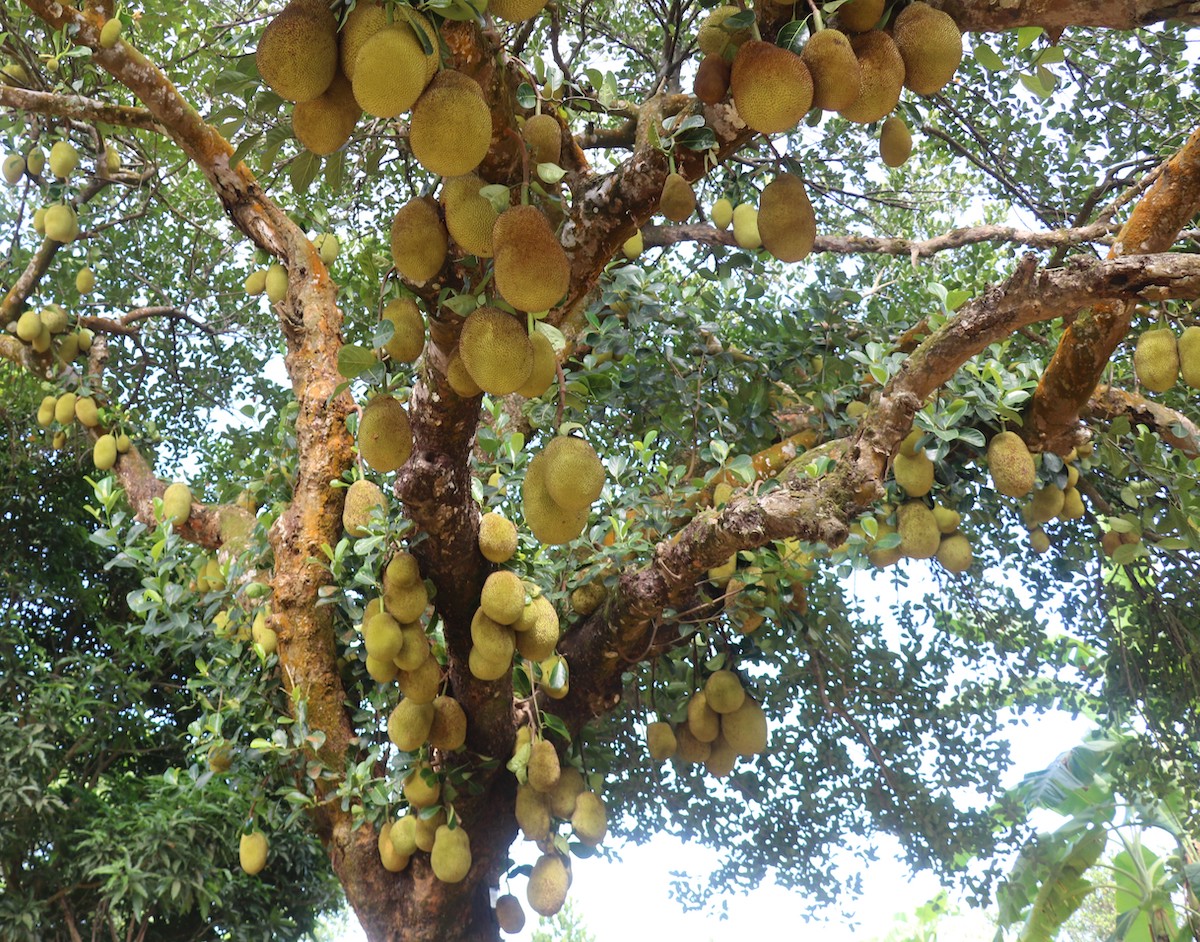Jackfruit is the world’s largest edible single fruit but short growing periods and cross-pollination restrict the commercialization of the its cultivation. Decoding the genome of a year-round and high-yielding jackfruit variety will lay the foundation for biotechnological improvements and the sustainable commercialization of this highly nutritious tropical and sub-tropical multi-purpose fruit.
Jackfruit (scientific name: Artocarpus heterophyllus Lam.) is an evergreen tree, which produces the world’s largest edible single fruit, one of which can weigh up to 50 kg! It is widely grown in tropical countries including Bangladesh, India, China, Malaysia, Thailand, Indonesia and the Philippines, and parts of central and eastern Africa, Florida in the USA, Latin America and the Caribbean. Over the past few years, it has attracted the attention of food experts and technologists due to its nutritional health benefits.
Jackfruit (or Kanthal in Bangla) is the national fruit of Bangladesh and is an important source of nutrients for many people in Bangladesh. At more than 1 million tons per year, Bangladesh is the world’s second-largest producer of jackfruit, after India.
Jackfruit is a rich source of calories, vitamins, minerals and dietary fibre, while its seeds are a good source of carbohydrates and potassium, along with considerable amounts of vitamins, bioactive compounds, protein and minerals like phosphorus and calcium. However, the nutritional value of this fruit is not fully utilized due to its short growing season and extremely high diversity in fruit quality. The potential of processed jackfruit such as the flesh of the unripened fruit (fresh as well as dried), packaged ripened fruit and roasted seeds are high in the international market. The flesh of unripe jackfruit is also considered a meat alternative. In fact, the Government of Bangladesh selected jackfruit under the Food and Agriculture Organization of the United Nations’ One Country One Priority Product (OCOP) initiative to achieve SDG 2 (zero hunger).
Jackfruit cultivation, however, is no easy feat. It relies on cross-pollination to breed, the natural process wherein pollen from one flower of a given species is transferred to another of the same species. The quality of the produce is widely inconsistent, making it hard to cultivate and process commercially. Besides, the growing period for seasonal jackfruit in Bangladesh is quite short (June to August). Logistical limitations in processing and storage capacities often result in wastage as high as 30% or more. The tree is also sensitive to waterlogging, soil salinity and other biotic and abiotic stresses associated with global climate change. Consequently, the use of advanced biotechnology to adapt the jackfruit genome for favourable traits, such as high yields, longer growing seasons, and stress resistance to floods, droughts, salinity and pests becomes paramount.
A jackfruit tree was discovered in the forests of Ramgarh, in the Khagrachari district of Bangladesh, which gave an uninterrupted fruit yield from September to June (almost year-round). This unique variety, called BARI Kanthal-3, was registered by the Bangladesh Agricultural Research Institute (BARI). It was found that in one year, a mature plant of BARI Kanthal-3 produced 219-245 fruits, with an average weight of 5.43 kg. This amounted to a total yield of 1165-1505 kg from a single plant in the span of a year. Understanding the underlying molecular mechanisms that are responsible for this variety's year-round fruiting and high yields (four times higher than seasonal jackfruit) could offer the opportunity for molecular breeding and commercialization of jackfruit.
The arrangement of DNA in an organism, also known as its genome, holds clues to understanding its behaviour. DNA sequencing, or the understanding of this arrangement, was done for the year-round jackfruit and it was found that the genome of BARI Kanthal-3 contains higher prevalence of flowering-related genes, compared to those of other flowering plants. The DNA sequence data, associated high prevalence of flowering related genes, and the unique differences at very specific positions in the genome lay the foundation for the biotechnological improvement of this highly nutritious but underutilized Southeast-Asian staple. The findings of this study are likely to help in a better understanding of the evolution, domestication and the year-round fruiting of this crop, which will support its sustainable commercial development.
Commercial cultivation and processing of the year-round jackfruit variety could become an important source of income for people, with not only increased profitablity for local growers but also financial support, especially for women, in the economically vulnerable, rural regions of the country. The high shelf-life of processed jackfruit products is expected to improve food and nutritional security as well as alleviate rural poverty in Bangladesh. Increased cultivation also facilitates efficient use of land and forest cover. However, the development of an efficient tissue culture and/or grafting technology for the large-scale production of samplings for this novel variety is needed for commercial cultivation to meet the goals of food and nutritional security of the ever-increasing population of Bangladesh.
Original Article:
Islam, T., Afroz, N., Koh, C., Hoque, M. N., Rahman, M. J., Gupta, D. R., Mahmud, N.U., Nahid, A., Islam, R., Bhowmik, P.K. & Sharpe, A. G. (2022). Whole-genome sequencing of a year-round fruiting jackfruit (Artocarpus heterophyllus Lam.) reveals high levels of single nucleotide variation. Frontiers in Plant Science 13: 1044420
 Plant Biology
Plant Biology



